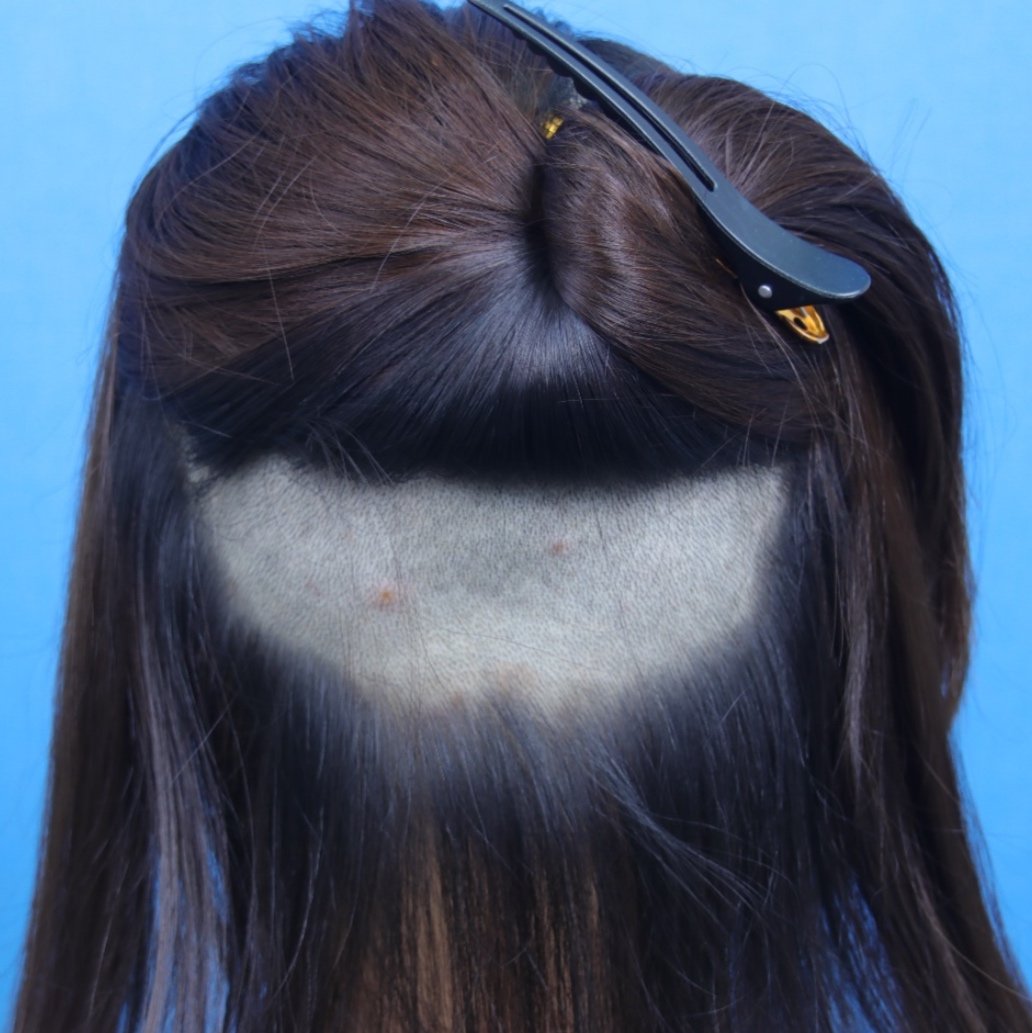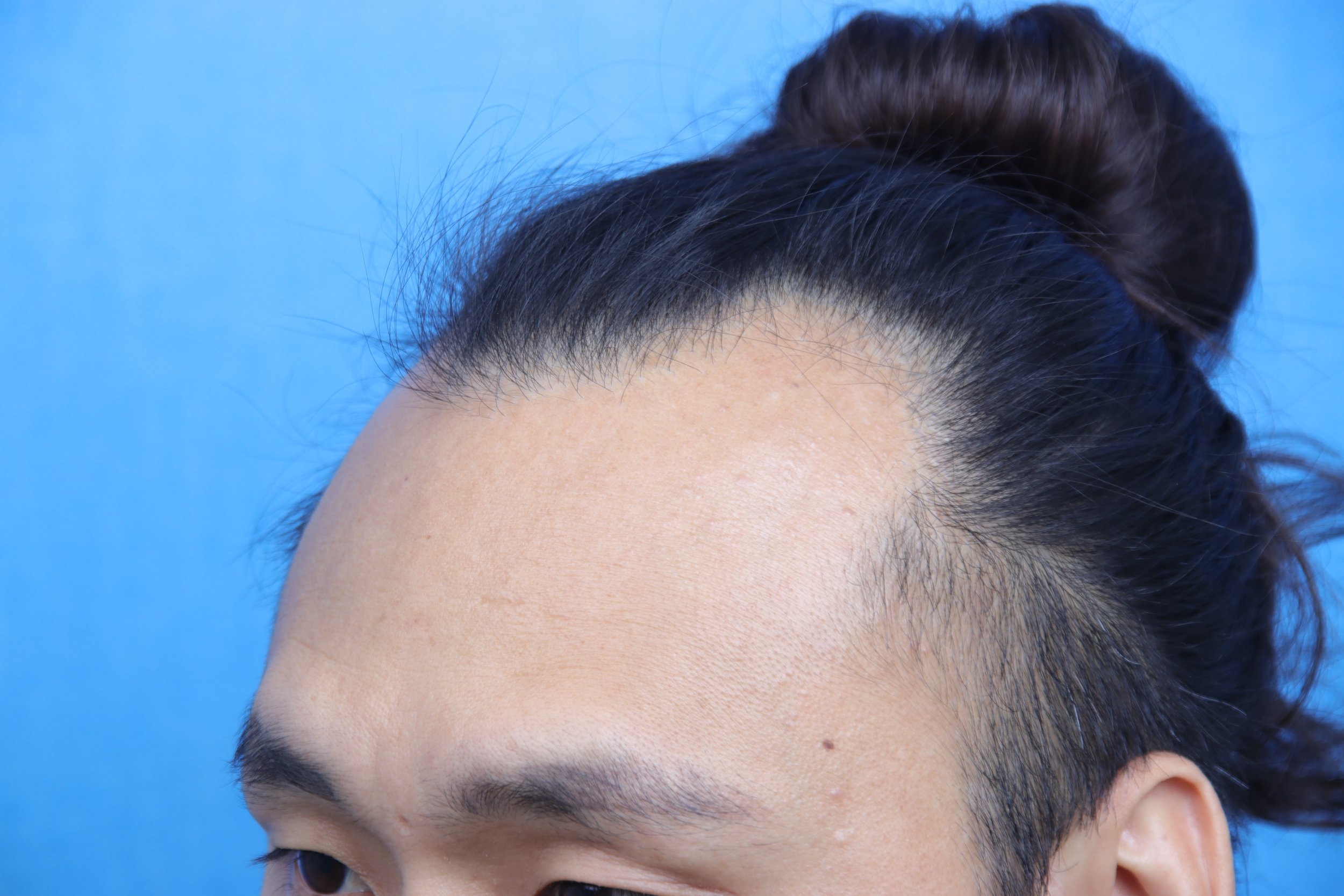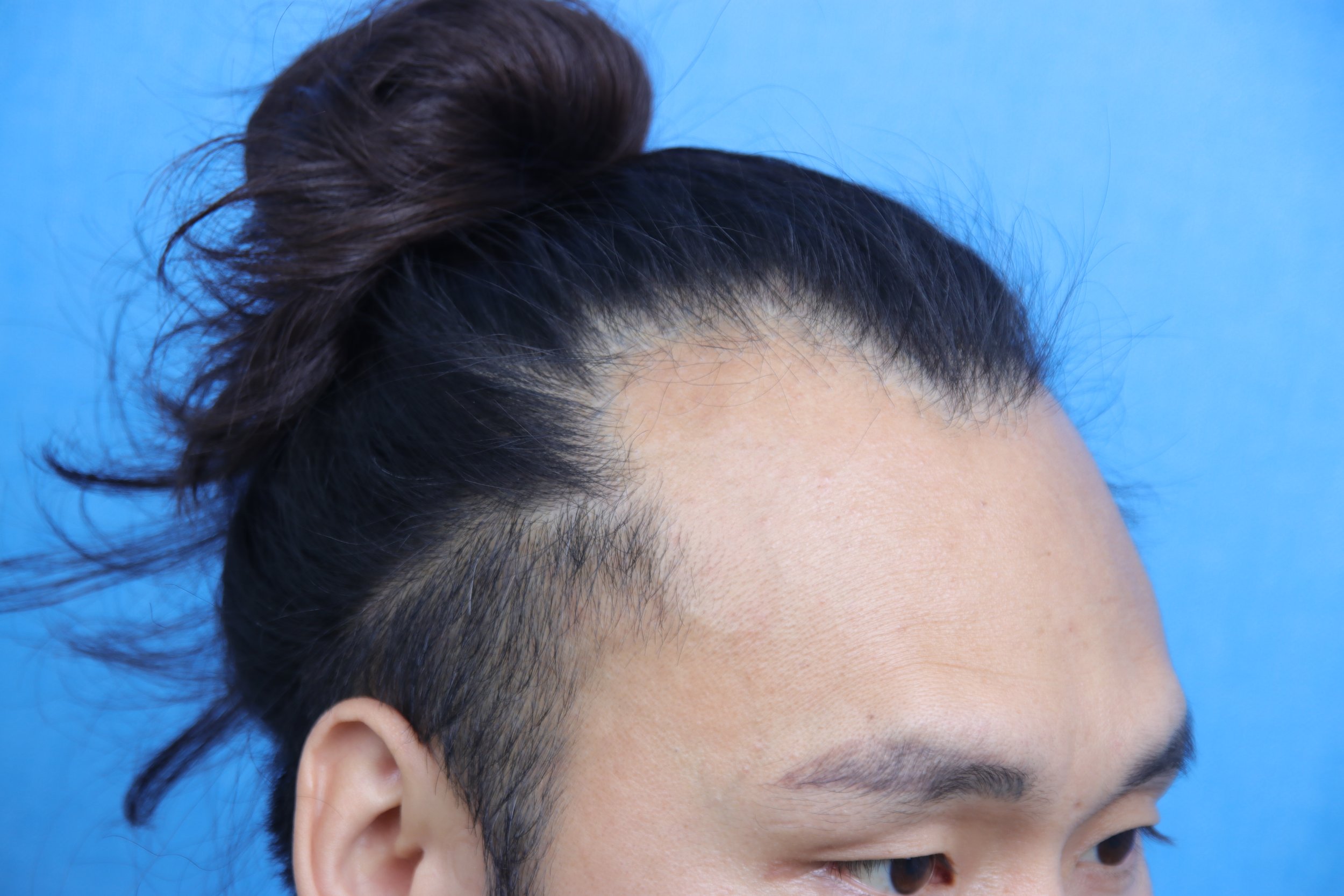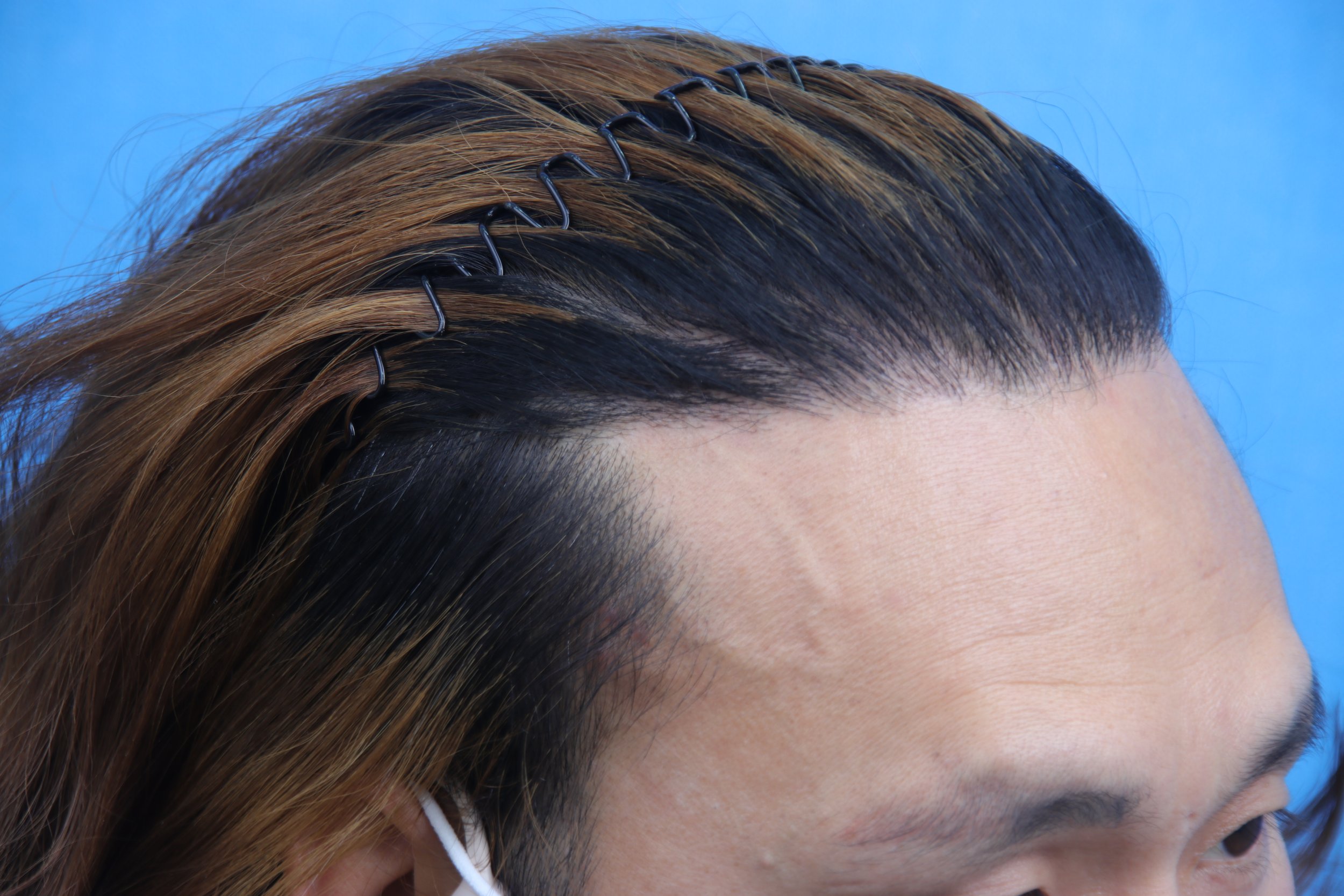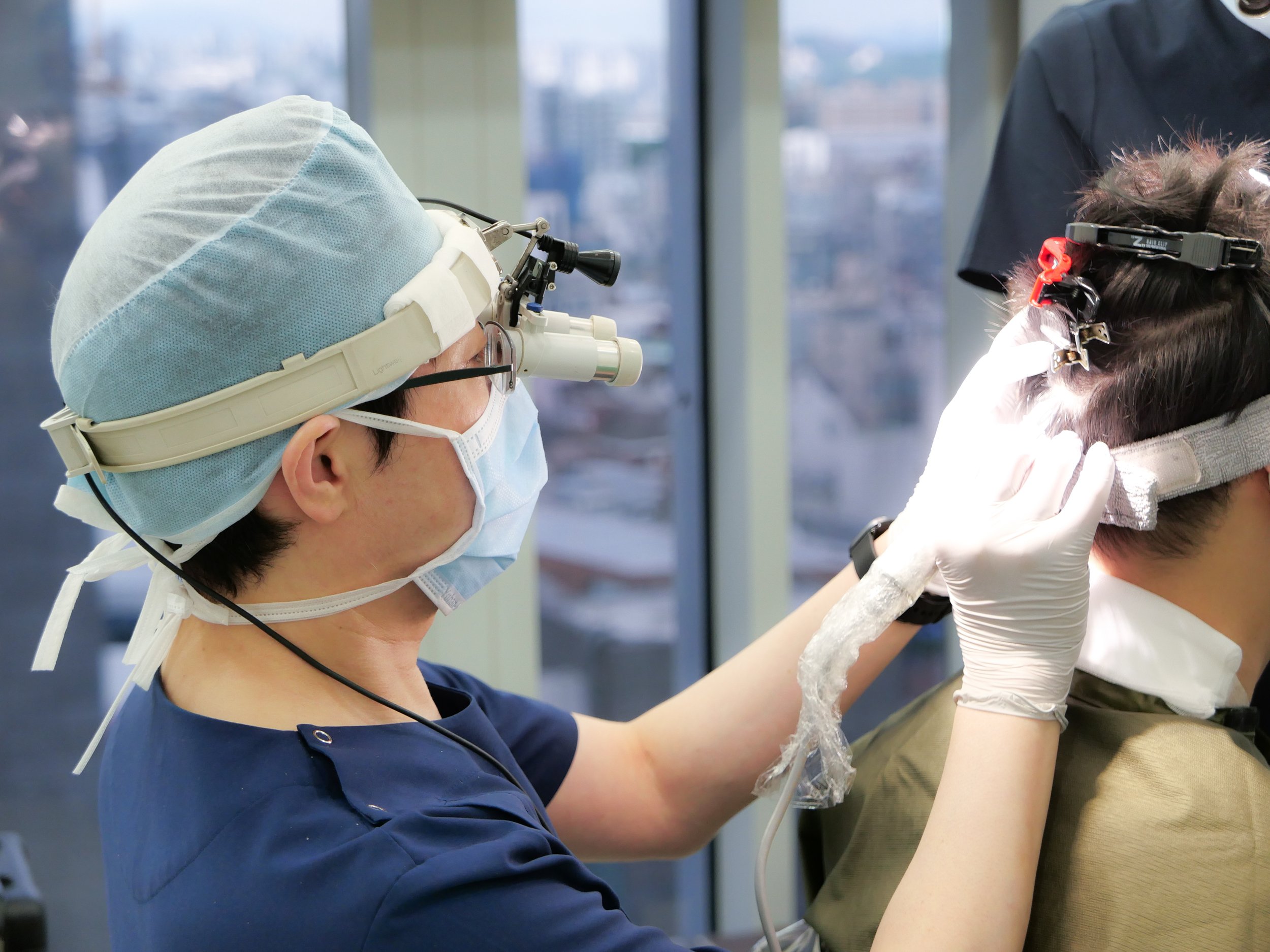
Moarm’s FUE Hair Transplant
What is FUE Hair Transplant?
FUE Hair Transplant stands for hair transplant using Follicular Unit Extraction. Compared to traditional hair transplant method, which is often called a strip procedure or FUT, FUE hair transplant is different in terms of harvesting the donor hair follicle. FUE essentially harvests individual donor follicle one by one with a surgical tool with small diameter. By doing so, no linear incisional line is created on the donor area of the hair. Even with a very short cut hair, donor site after the FUE hair transplant is minimally visible.
FUE Hair Transplant for Male Hair Loss
Hair loss usually occurs in a certain pattern when caused by hormones. Usually the pattern starts from the front hairline creating an M-shape. This hair loss continues to the top of the hair and proceeds to the back part of the head. Sometimes hair loss can start from the top of the head as well. When hair loss medication is not enough for such hair loss cases, hair transplant is done together for the treatment. Back hair is usually a safe donor area, an area that is not affected by hair loss symptoms. As hair from a safe donor area is not easily affected by hormonal hair loss, it tends to remain well after transplantation.
FUE Hair Transplant for Female Hair loss
In female hair loss tends to start from the top of the hair and expands the area. While male hair loss is caused by genetic and hormonal reasons, female hair loss is caused by various factors. As more complicated factors are related to female hair loss, treating with medication is not quite easy at times. Hair transplant can be a good option if hair loss cannot be controlled with medications.
Female patient’s hair is usually thinner with less count than male patient’s hair. This limits from having a large amount of transplantation. For a good result, it is best to graft good conditioned hair from the back and transplant to the weak area.
Hair loss can be divided
into three patterns
Amount of hair follicles for FUE hair transplant is determined by donor hair condition, transplant area, density, nearby hair condition, and age.
M-shaped hair loss
Top of the head hair loss
Hair loss in overall area
FUE Hair Transplant Surgery Method
FUE Hair Transplant Surgery Technique
As a pioneer of FUE (follicular unit extraction) hair transplant, Dr. Lee of Moarm harvests hair follicles one by one and transplants each follicle by making a slit (site for the graft). One hair follicle has 2-3 hairs on average. It is important to harvest carefully without any damage to the follicles. Transplanted hair must also be carefully designed considering the density, direction, and angle of the hair. This determines the result of the hair shape and naturality.
Follicular Unit Extraction (FUE)
3-4 hair count per follicle
3-4 hair count per follicle
2 hair count per follicle
1 hair count per follicle
FUE Hair Transplant Harvesting Method
When performing FUE hair transplant surgery, there are two ways of harvesting donor hair follicles. One is Shaving method and the other one is Non-shaving method. Shaving method shaves parts of the back head for an easier and faster harvest, while Non-shaving method does not shave but individually hand pick the donor follicle. See details of each method and find out which method fits best for you.
Instead of incising in a strip, FUE method harvests each hair follicles for hair transplantation. One follicle has 2-3 hair counts on average. Donor hair will be harvested in follicle count and will be transplanted in follicular units.
Shaving Method
In order to harvest the hair follicles, the hair must be short. If the donor area is shaved, the surgery can be done in a shorter period of time. However, the surgery area may be more visible after the surgery.
Non-Shaving Method
If you need to return to work immediately, non-shaving method can be used for your hair transplant surgery. For this method, donor hair is hand picked and will be cut one by one using scissors. After the surgery it is barely noticeable and can return to normal life immediately. While this method has faster recovery time, surgery time may be longer than the shaving method as the doctor needs to hand pick each donor hair.
FUE Hair Transplant Surgery Process
Design transplant area
Shaving method
Shave donor area
Non-shaving method
Select donor hair
Local anesthesia
on donor and transplant area
Transplant on the slit site
FUE Hair Transplant Recovery Process
-
Post-op day 1-3
90% of hair follicles are fixed into the skin. Transplant area may have scabs and there may be some swelling and redness.
-
Post-op day 7-10
Transplanted hair follicles are fully settled. Swelling and redness will start to decrease.
-
Post-op week 3-4
Transplanted hair starts to fall off for resting status. Sensitivity will be recovered by 80%.
-
Post-op month 3-5
Hair follicles grow back and sensation recovers in full.
-
Post-op month 6-9
Transplanted hair becomes thicker and longer, blending with your original hair.

Why Moarm for FUE Hair Transplant?
01
Most experienced in non-shaving FUE
02
High survival rate
03
One day recovery
04
Natural result
FAQ
-
Surgery time differs depending on the amount of transplanted follicles. Usually FUE hair transplant takes 5-6 hours depending on the amount of hair follicles transplanted.
-
Usually during the recovery period, you may feel some pain, swelling, and numbness. There is a chance of folliculitis. Depending on the technique and experience of the doctor performing the surgery, results may differ in terms of shape and survival rate.
-
Compared to male hair transplant patients, female patients tend to have a larger degree of shock loss. Although the exact reason of this shock loss has not been specified yet, it is most likely that hormonal imbalance causes such symptoms. Shock loss happens 3-4 weeks post operation, losing nearby hair on the transplanted area. After 3 months, hair grows back and forms a good shape.
-
If you think that you need additional graft to support the previous surgery, you may consider after 9 months from the previous surgery.
-
When hair follicle is harvested from the donor site, the follicle is essentially transmitted to the transplant area. Donor site will not have new hair to grow. This is the reason to make sure that your surgery is successful in the first place or may lose more hair eventually.
-
It is recommended for you to stay in Korea for three days, one day for surgery and two days for dressing and shampoo service.
-
It is recommended to visit the clinic for two days after the surgery for doctor’s check up. If possible, check up every 6 months is ideal for follow up sessions but if you are not located in Seoul, online follow up is also available as well.
Before and After
-
Before
-
Before
-
Before
-

After
-
After
-
After
-

3,800grafts, 2years
-

2,000grafts, 1year
-

1,800grafts, 1year
-

1,800grafts, 8months
-

2,300grafts, 1year
-

1,800grafts, 1year








